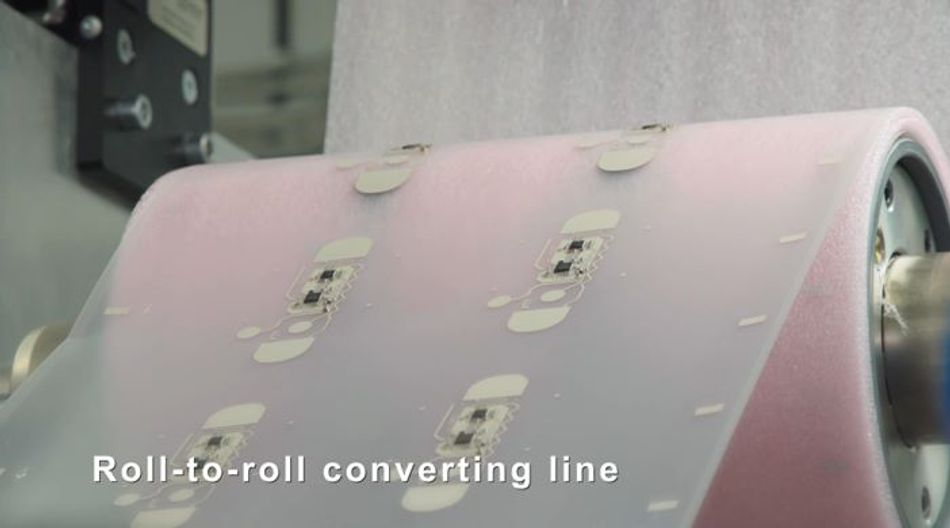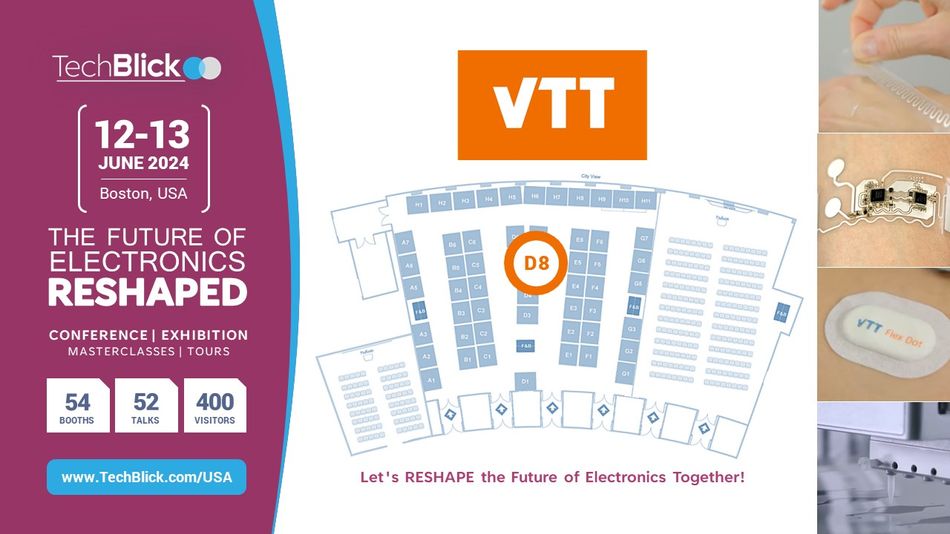Pilot Factory for roll-to-roll processing of next-generation smart wearable patches
Wearable sensor patches offer many opportunities for healthcare and wellness applications. For comfort and reliability, they should be flexible, soft, conformable, or even stretchable. Printed and hybrid electronics enable the use of almost any substrate and packaging materials, making it essential.
This article was first published on
www.techblick.comWearable sensor patches offer novel opportunities for many healthcare and wellness applications. For optimal comfort and reliability, they should be flexible, soft, conformable, or even stretchable. Printed and hybrid electronics enable the use of almost any substrate and packaging materials, making it the perfect technology for next-generation wearables.
Author: Antti Kemppainen , VTT, Antti.Kemppainen@vtt.fi
Pilot Factory
The production of printed and hybrid electronics requires several manufacturing processes and tools which might not be available by commercial manufacturing partners. VTT’s Printocent Pilot Factory bridges the gap towards full upscaled manufacturing by extremely versatile infra, including for example following capabilities:
[1] Roll-to-roll printed electronics lines with:
Interchangeable printing methods, high curing capacity and automated layer-to-layer registration.
Printing and coating processes are available for thin films (<100 nm) up to thick films (tens of micrometers).
Highly experienced team and facilities for ink tailoring, process development and quality control.
[2] Component assembly in a roll-to-roll format using:
High throughput pick and place line for low-temperature soldering or adhesive bonding.
Flip-chip high-precision and bare-die assembly line
[3] Extensive converting and post-processing capabilities including:
A Versatile lamination and cutting converting line equipped with a cutting laser, robot arms, soldering and ultrasonic welding capabilities
Injection molding machine with a roll feeder for overmolded electronics
[4] The roll-to-roll testing line for automated functionality testing and programming purposes.
[5] Dedicated pilot line for silicone material processing in reduced pressure.
Additionally, for early screening and testing, there are laboratory-scale capabilities available for all key processes used in Pilot Factory. For verification purposes, characterization capabilities range from material testing, profilometry to 3D X-ray imaging.
We are Speaking in Boston
Let's RESHAPE the Future of Electronics together, making it Additive, Sustainable, Flexible, Hybrid, Wearable, Structural, and 3D.
Join us at this long-awaited TechBlick US event on 12-13 June 2024 in Boston. This is the most important industry and research meeting in our field in the US.

ECG Patch: Proof of Concept and Proof of Manufacturing
At VTT, we have developed a smart patch proof-of-concept for a single-lead ECG (Electrocardiogram) wireless patch. This patch is printed and assembled onto a TPU (Thermoplastic Polyurethane) substrate.

Manufacturing processes have been developed and piloted in a versatile environment with highly scalable technologies. In the video below, part of the converting and post-processing at VTT Printocent pilot factory for the ECG patch is shown. The demonstrated technology offers a versatile manufacturing platform for the development of elastic wearable skin contact patches.
Smart patch manufacturing video https://www.youtube.com/watch?v=z96NH3xBoGw

More sustainable future
Printed electronics enable an unlimited selection of materials. For disposable smart patches reused, recycled, biobased or even biodegradable materials can be used. In a recent study, VTT has developed a new sustainable electrocardiogram patch that is fully recyclable and made of biomaterials. The device is modular, so electronic components can be easily removed from the disposable patch and used again. The patch itself is made of nanocellulose and printed with carbon conductors and sensing electrodes. The biodegradable patch is made of VTT’s new material cellulose e-skin, which replaces traditional plastic in wearable skin applications.
Why to use VTT and Pilot Factory
Printocent pilot factory and VTT’s experienced crew offer a fast path from proof of product concept feasibility to scalable continuous web manufacturing. Alternatively, we can address specific technical challenges or process bottlenecks, complementing our customers’ existing competences or capabilities. This facilitates quicker market entry and enhances the precision of manufacturing investments for the future. The insights gained from pilot developments can be effectively leveraged for technology transfer to third parties or for establishing in-house production, with our experts’ support.
Read more about:
We are Exhibiting in Boston
Let's RESHAPE the Future of Electronics together, making it Additive, Sustainable, Flexible, Hybrid, Wearable, Structural, and 3D.
Visit our booth at this long-awaited TechBlick US event on 12-13 June 2024 in Boston. This is the most important industry and research meeting in our field in the US.

https://www.vttresearch.com/en/ourservices/printed-electronics
Printocent Ecosystem for Printed Electronics
